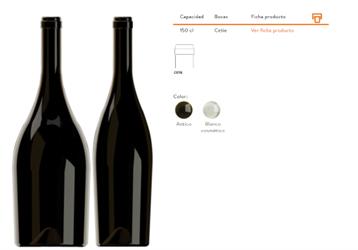The origin of Magnum bottles

The origin of Magnum bottles
Naturally, when we talk about Magnum wines, we are talking about a name which derives from the Latin word in the 2nd declension ‘Magnus – Magnum’. This word means ‘large’ in the language of the Ancient Romans and the Magnum wine bottle is, effectively, double the size of an ordinary, everyday bottle of wine, the 75 ml bottle. The size of the 75 ml bottle was established in 1970 through an international treaty, as the standard measure for selling wine.
The creation of the Magnum wine bottle took place towards the end of the 19th century, thanks to industrial glass bottle production methods developed by the Ricketts family of Bristol, who were glass manufacturers for generations. Until that time, glass bottles were made by hand but the development of moulds for mass production, which came in many different shapes and sizes, made it possible to try new designs. Henry Ricketts & Co, in Bristol, England, registered the first bottle mould for industrial production in 1821. Thanks to the evolution of these different moulds and through many trials, failures and successes, the first would finally emerge for the first time, many decades later.
Advantages of the Magnum wine bottle
A little-known fact is that the Magnum wine bottle preserves wine better than the 75 mlbottle. This is because the amount of air inside both bottles is more or less the same but the Magnum bottle contains twice the amount of wine. For that reason, the flavour, the aroma and all the properties of the wine are preserved for longer in optimum conditions.